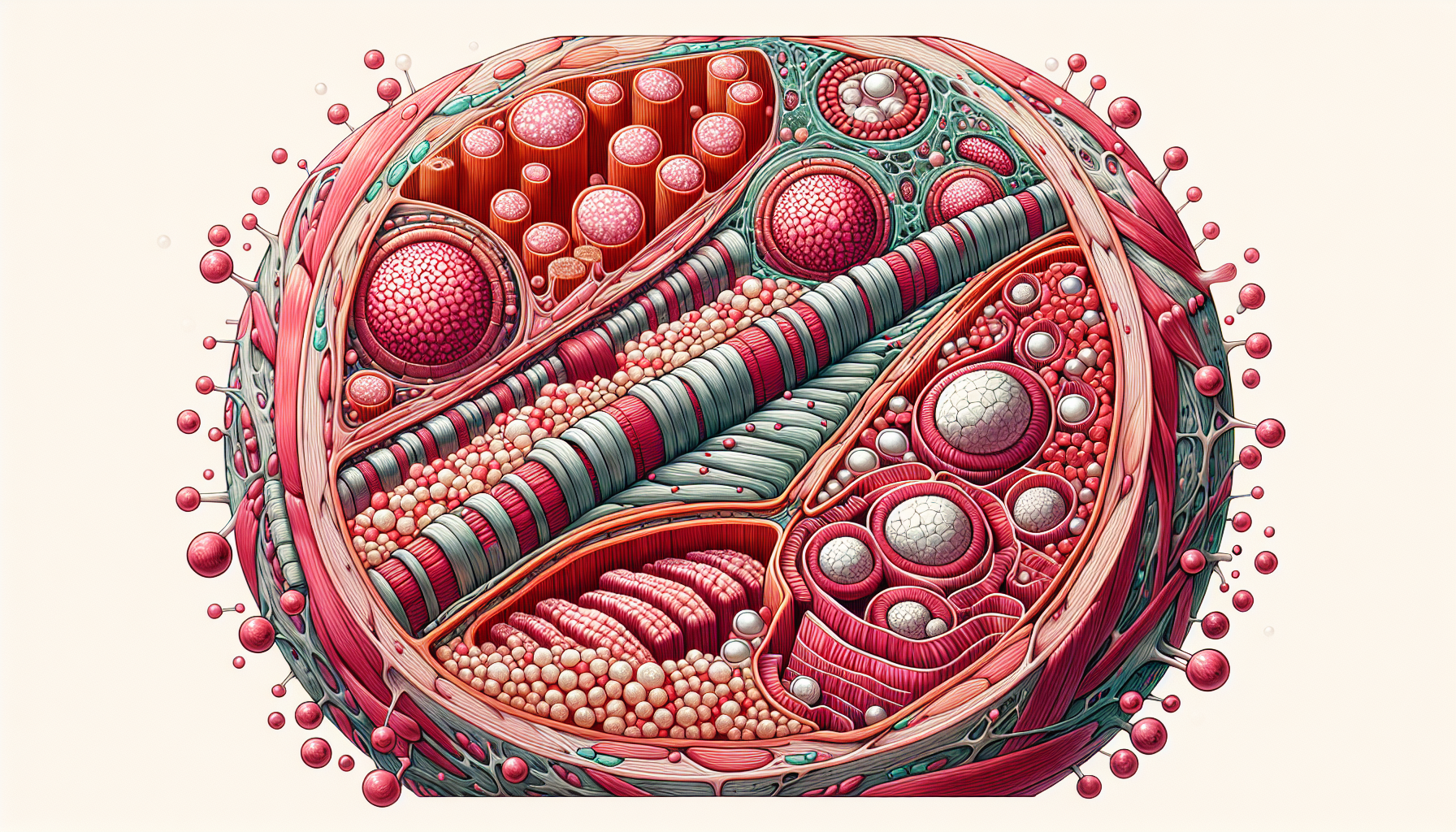Muscle hypertrophy is a term that refers to the increase in muscle mass and cross-sectional area. The process involves an increase in the size of muscle cells due to an augmentation in the volume of sarcoplasmic fluid, the number of contractile proteins, and the number and size of myofibrils—the fibers that make muscles contract. Understanding the biology of muscle hypertrophy not only helps athletes and fitness enthusiasts tailor their workout regimes for optimal gains but also informs rehabilitation practices for those recovering from muscle atrophy due to injury or disease.
The Mechanisms of Muscle Growth
The human body adapts to the stresses placed upon it, and muscle tissue is no exception. When muscles are subjected to high levels of stress like weight lifting, resistance training, or strenuous physical activity, the fibers sustain microscopic damage. This damage signals the body to respond by repairing and reinforcing the muscle, leading to an increase in muscle size and strength over time.
There are two primary mechanisms behind muscle hypertrophy:
-
Myofibrillar Hypertrophy: This type of hypertrophy results from an increase in muscle contraction proteins—actin and myosin—and the number of myofibrils within a muscle cell. Myofibrillar hypertrophy contributes to muscle strength and density.
-
Sarcoplasmic Hypertrophy: In this form, the volume of sarcoplasmic fluid in the muscle cell increases. Although this doesn’t necessarily increase the muscle’s ability to contract, it does increase its size, often resulting in the ‘puffed up’ look associated with bodybuilding.
Both types of hypertrophy can occur simultaneously, and they are influenced by the type of physical training an individual undertakes.
Training for Hypertrophy
To achieve muscle hypertrophy, a combination of mechanical tension, muscle damage, and metabolic stress are necessary. This is typically accomplished through resistance training exercises that involve weights or bodyweight movements designed to fatigue the muscles. Training variables such as load, volume, frequency, rest periods, and exercise selection can be manipulated to maximize hypertrophy.
A link to a comprehensive guide on fitness provides in-depth insights into creating an effective training program to achieve hypertrophy goals.
Nutrition and Muscle Growth
Adequate nutrition is essential for muscle repair and growth. Protein intake is particularly critical because amino acids—the building blocks of protein—are required for the synthesis of new muscle tissue. Carbohydrates are also important as they provide the energy needed for high-intensity workouts.
For those looking to optimize their muscle growth, considering the importance of micronutrients in athletic performance can be a game-changer. Micronutrients such as vitamins and minerals play crucial roles in energy production and muscle contraction, affecting overall performance and the body’s ability to build muscle.
Hormonal Response and Hypertrophy
The body’s hormonal responses to training can also significantly influence muscle hypertrophy. Hormones like testosterone, human growth hormone (HGH), and insulin-like growth factor (IGF-1) promote anabolic conditions conducive to muscle growth. While the body naturally regulates these hormones, certain training protocols can enhance their release, further aiding hypertrophy.
The Role of Rest and Recovery
Rest and recovery are just as important as the workout itself. During rest periods, the body repairs the microtears in muscle fibers, leading to muscle growth. Overtraining can lead to excessive muscle breakdown, chronic fatigue, and even injuries, which are counterproductive to hypertrophy.
Understanding the balance between activity and recovery is crucial. For instance, incorporating advanced core exercises can complement hypertrophy-focused training by enhancing stability and preventing injuries, thus supporting continuous progress.
External Resources Supporting Hypertrophy
To dive deeper into the science behind muscle growth, specific resources can provide additional valuable information:
- The American Council on Exercise offers research and insights on exercise science, including how different types of training can affect muscle growth.
- The National Strength and Conditioning Association provides guidelines and position stands on resistance training for athletic development.
- PubMed Central hosts a wealth of peer-reviewed scientific studies that investigate the cellular and molecular responses to resistance training.
- The Journal of Applied Physiology publishes original research that can help to understand how various training regimens influence muscle hypertrophy.
Advanced Techniques to Break Through Plateaus
As individuals progress in their training, they may reach a plateau in muscle growth. To continue progressing, advanced techniques such as drop sets, supersets, and eccentric loading can be employed. Understanding how to break through fitness plateaus with advanced techniques is essential for those looking to take their muscle development to the next level.
Conclusion
Muscle hypertrophy is a complex biological process influenced by an array of factors including resistance training, nutrition, hormonal balance, rest, and recovery. By understanding the mechanisms behind muscle growth and how to effectively stimulate hypertrophy through proper training and lifestyle choices, individuals can achieve their physical fitness goals. It’s important to remember that muscle growth is a gradual process that requires patience, dedication, and smart training practices. Tailoring your approach to hypertrophy by incorporating evidence-based strategies will ultimately lead to sustainable and impressive results.



